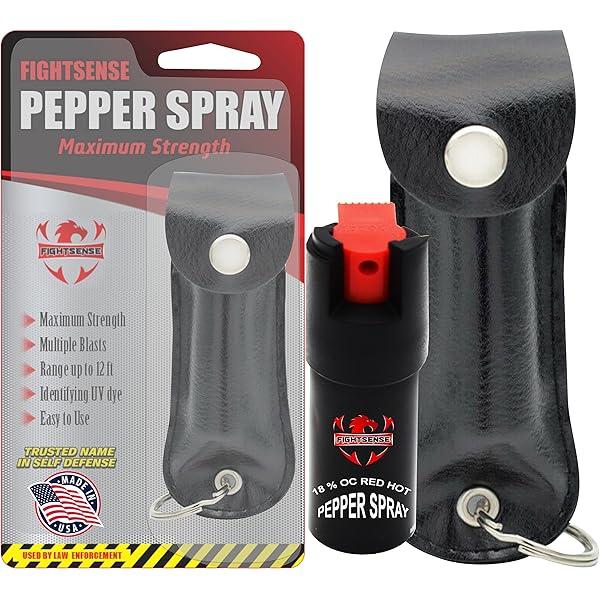Table of Contents
- The Importance of Clear Communication in Self-Defense Situations
- How Verbal Commands Can Diffuse Potential Threats Effectively
- Techniques for Delivering Assertive and Composed Verbal Warnings
- Best Practices for Integrating Verbal Commands with Pepper Spray Use
- Key Takeaways
The Importance of Clear Communication in Self-Defense Situations
In high-stress self-defense scenarios, clear and assertive verbal communication can serve as a powerful tool to de-escalate potential threats before physical action becomes necessary. Using decisively spoken commands not only signals to the aggressor that you are aware and prepared but also alerts bystanders who might assist or call for help. Phrases like “Stop!”, “Back away!”, or “Stay back or I will use this spray!” establish control over the situation and create a moment of pause that can prevent further escalation.
Moreover, verbal commands offer several practical benefits including:
- Clarity: They clearly communicate your intentions, leaving no ambiguity about the seriousness of the threat you perceive.
- Warning: They give the aggressor a final opportunity to stop, potentially avoiding the need to deploy pepper spray.
- Legal Protection: Demonstrating that you issued a warning can be crucial in legal contexts, emphasizing your actions were defensive and measured.
How Verbal Commands Can Diffuse Potential Threats Effectively
When confronted with a potentially dangerous situation, clear and assertive verbal commands can serve as the first line of defense, often halting aggression before it escalates. Using a calm yet firm tone communicates control and confidence, which can disarm an aggressor mentally. This form of communication provides the opportunity to de-escalate tension by setting boundaries immediately, making it clear that any further hostility will have consequences. Using verbal commands also allows the defender to maintain legal and ethical standards by opting for a non-physical response initially, creating space for more measured reactions if necessary.
Effectiveness hinges on a few key verbal strategies, including:
- Direct language: Clear commands like “Stop,” “Back away,” or “Stay back” remove any ambiguity about intent.
- Consistent repetition: Repeating commands reinforces commitment to maintaining safety.
- Body language alignment: Command delivery paired with upright posture, eye contact, and controlled gestures increases impact.
By mastering these elements, verbal commands act as a powerful preventative tool, reducing the need to resort to pepper spray and promoting safer outcomes for all involved.
Techniques for Delivering Assertive and Composed Verbal Warnings
When issuing verbal warnings in tense situations, maintaining a calm and assertive tone is essential to de-escalate potentially volatile encounters. Clear articulation paired with steady eye contact conveys control and confidence, helping to establish authority without provoking aggression. Using direct and concise language reduces misunderstandings-phrases like “Stop immediately” or “Step back now” leave little room for ambiguity. It’s equally important to monitor your breathing and body language; relaxed shoulders and measured pacing can reinforce your verbal message and help prevent the escalation that might otherwise lead to the use of pepper spray.
Incorporating strategic elements into your warnings enhances their effectiveness and ensures your message is received loud and clear. Consider the following tactics:
- Project your voice so it carries but doesn’t shout, signaling control.
- Pause briefly after each command to allow the individual time to respond or comply.
- Use non-threatening but firm body language such as open palms and facing the individual squarely.
- Deliver warnings in escalating order, starting with verbal cues before signaling a readiness to use pepper spray if necessary.
Best Practices for Integrating Verbal Commands with Pepper Spray Use
Before reaching for pepper spray, it’s essential to establish clear and firm communication. Utilizing calm yet authoritative verbal commands can de-escalate many confrontations, preventing the need for physical defense. Make your intentions unmistakably clear by using simple, direct phrases such as “Stop right there” or “Back away now.” This approach not only warns the aggressor but also signals to bystanders and authorities that you are attempting to resolve the situation responsibly. Pausing to issue commands helps create a mental barrier for the attacker, buying you valuable time and space.
Integrating verbal commands with pepper spray use means sharpening your delivery to enhance effectiveness. Remember these key points:
- Project your voice confidently without shouting to maintain control.
- Keep commands concise to avoid confusion during high-stress moments.
- Maintain eye contact when possible to reinforce your authority.
- Prepare mentally by rehearsing commands so they come naturally.
By mastering the blend of verbal assertiveness and timely pepper spray deployment, you drastically reduce the chance of escalation while prioritizing your safety.
Key Takeaways
In conclusion, mastering the use of verbal commands before deploying pepper spray is not just a recommended practice-it’s a critical step in ensuring both your safety and legal protection. Clear, assertive communication can de-escalate potential threats and may even prevent the need for physical intervention altogether. By prioritizing verbal warnings, you demonstrate control and responsibility, which can make all the difference in a high-stress situation. Empower yourself with the knowledge and confidence to use your pepper spray effectively-and remember, sometimes the right words are as powerful as the spray itself. Stay safe, stay prepared.Check Our Other Blogs
- StunGun – Your Trusted Source for Stun Guns, Laws, and Self-Defense Tips
- PepperSprayLaws – Your Trusted Resource for Pepper Spray Information
- StunGunLaws – Your Trusted Guide to Stun Gun Legality and Safety




